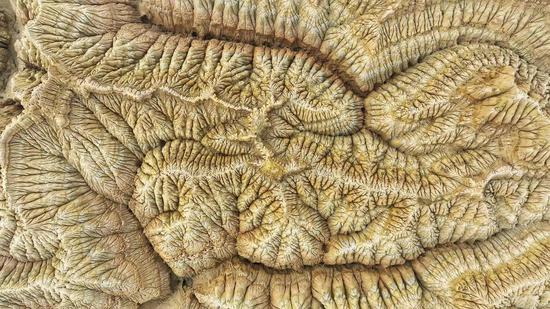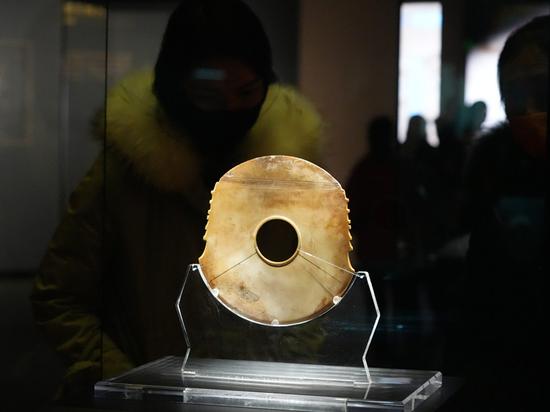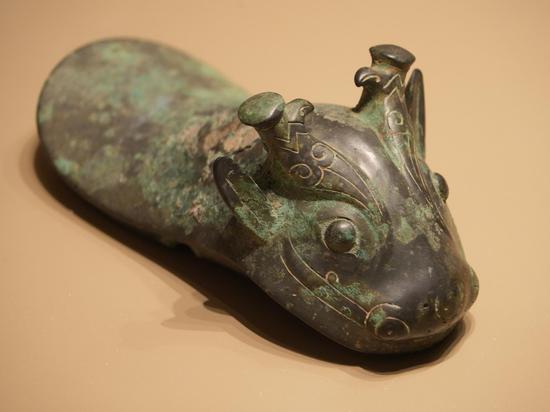Chinese zoologists have found that the base deletion in genes resulted in the brown-and-white coloration in giant pandas, providing unique insights into the genetic basis of fur color variation in the rare animal.
A research group, led by Wei Fuwen, an academician from the Institute of Zoology, Chinese Academy of Sciences, and Hu Yibo, a research fellow from the same institute, published a research paper on the Proceedings of the National Academy of Sciences (PNAS). The study discloses the mystery of the rare fur coloration of panda Qizai, the world’s only brown-and-white panda bred in captivity, an extremely rare subspecies found in the Qinling area.
Qizai, who was abandoned by his mother after birth, was well cared for at the Shaanxi Institute of Zoology (Northwest Institute of Endangered Zoological Species) at the foot of the Qinling Mountains in Northwest China's Shaanxi Province.
According to the thesis, gene mutation of base deletion that occurs in the pigmentation related gene Bace2 may probably result in the rare color of the giant panda.
As a unique species in China, giant pandas mainly habituate in Southwest China’s Sichuan Province as well as in Qinling Mountains.
Although it is the same species, the Qinling giant pandas are quite different from the giant pandas in Sichuan and Northwest China’s Gansu Province.
The Qinling pandas look more like cats with smaller skulls and overall sizes, while the subspecies in Sichuan are more like bears. They also have differently colored furs. The Qinling pandas have dark and light brown furs, rather than the commonly seen black and white.
The research team led by Wei released a thesis in 2013 to reveal through genome sequencing that although the two subspecies are close relatives, they have been separated for about 300,000 years.
In their latest research, the scientists conducted genomic analyses on three panda families related to the brown-and-white panda and 29 other pandas with normal black-and-white color.
Among the giant pandas from the three panda families in research, only Qizai and another brown-and-white giant panda named Dandan, which was found in Foping National Nature Reserve in Shaanxi in 1985, were brown and white. Dandan was born in 1971 and passed away in 2000.
An analysis of the genetic sequencing results showed that the brown-and-white pandas carried Bace2 with gene mutation, whereas the black-and-white giant pandas in captivity had no Bace2 with gene mutation.
The research team further used CRISPR-Cas9 gene-editing technology to verify their studies on laboratory mice, which showed that the mice with gene mutation also displayed light-colored fur.
Researchers found that the deletion of a gene or gene fragment can also lead to the changes in the fur color, which is a brand-new discovery in genetics.
Next step, the research team will research on how the base deletion affect the size and number of melanosomes which determine giant pandas’ fur and skin colors.


















































 京公网安备 11010202009201号
京公网安备 11010202009201号